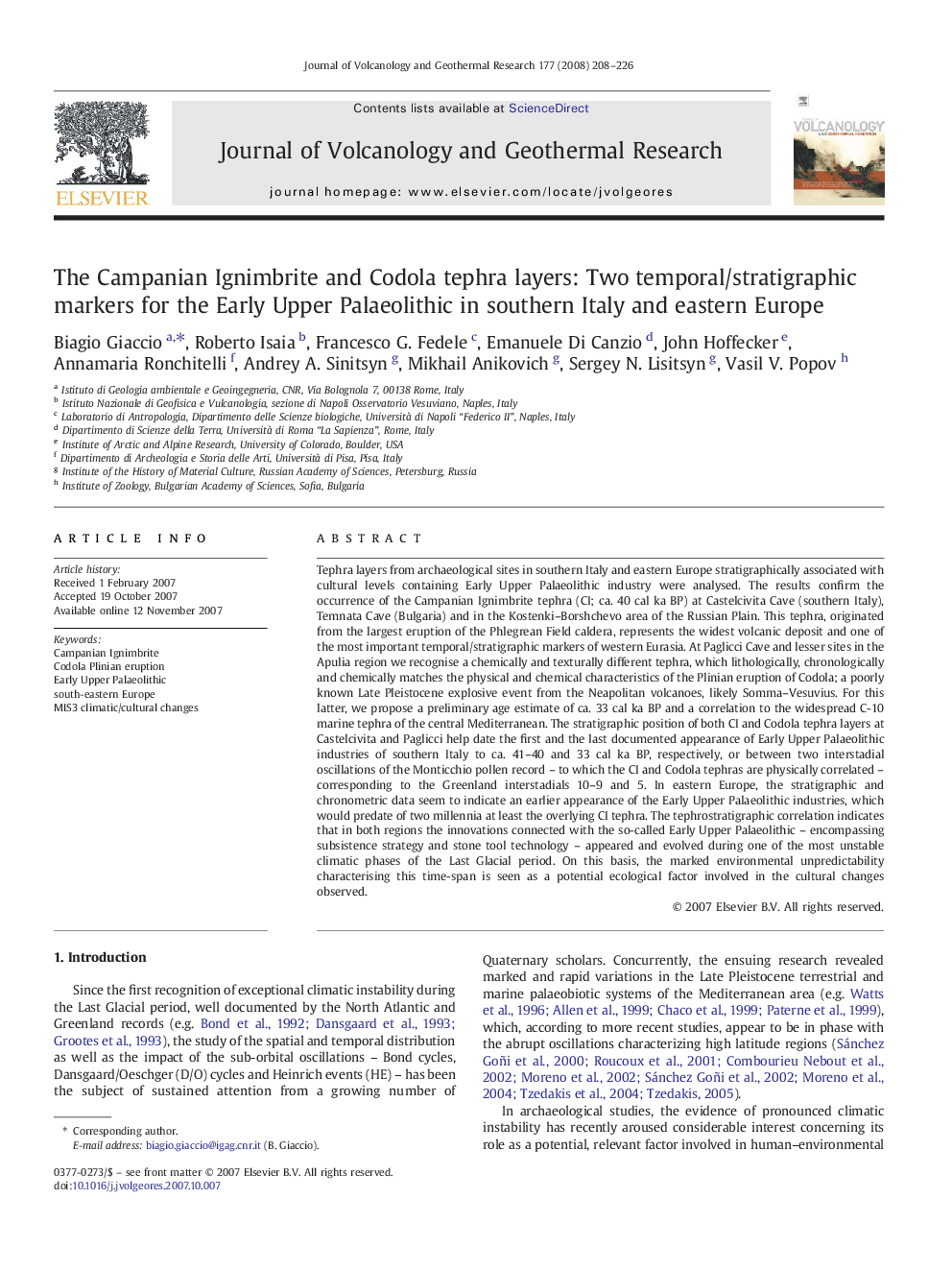| کد مقاله | کد نشریه | سال انتشار | مقاله انگلیسی | نسخه تمام متن |
|---|---|---|---|---|
| 4714723 | 1353986 | 2008 | 19 صفحه PDF | دانلود رایگان |

Tephra layers from archaeological sites in southern Italy and eastern Europe stratigraphically associated with cultural levels containing Early Upper Palaeolithic industry were analysed. The results confirm the occurrence of the Campanian Ignimbrite tephra (CI; ca. 40 cal ka BP) at Castelcivita Cave (southern Italy), Temnata Cave (Bulgaria) and in the Kostenki–Borshchevo area of the Russian Plain. This tephra, originated from the largest eruption of the Phlegrean Field caldera, represents the widest volcanic deposit and one of the most important temporal/stratigraphic markers of western Eurasia. At Paglicci Cave and lesser sites in the Apulia region we recognise a chemically and texturally different tephra, which lithologically, chronologically and chemically matches the physical and chemical characteristics of the Plinian eruption of Codola; a poorly known Late Pleistocene explosive event from the Neapolitan volcanoes, likely Somma–Vesuvius. For this latter, we propose a preliminary age estimate of ca. 33 cal ka BP and a correlation to the widespread C-10 marine tephra of the central Mediterranean. The stratigraphic position of both CI and Codola tephra layers at Castelcivita and Paglicci help date the first and the last documented appearance of Early Upper Palaeolithic industries of southern Italy to ca. 41–40 and 33 cal ka BP, respectively, or between two interstadial oscillations of the Monticchio pollen record – to which the CI and Codola tephras are physically correlated – corresponding to the Greenland interstadials 10–9 and 5. In eastern Europe, the stratigraphic and chronometric data seem to indicate an earlier appearance of the Early Upper Palaeolithic industries, which would predate of two millennia at least the overlying CI tephra. The tephrostratigraphic correlation indicates that in both regions the innovations connected with the so-called Early Upper Palaeolithic – encompassing subsistence strategy and stone tool technology – appeared and evolved during one of the most unstable climatic phases of the Last Glacial period. On this basis, the marked environmental unpredictability characterising this time-span is seen as a potential ecological factor involved in the cultural changes observed.
Journal: Journal of Volcanology and Geothermal Research - Volume 177, Issue 1, 20 October 2008, Pages 208–226